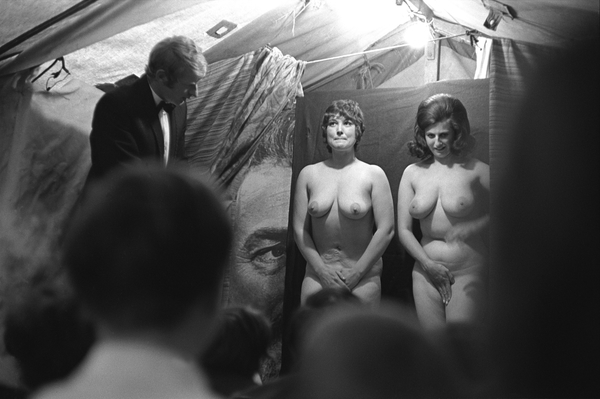I have been documenting Britain for forty-five years. I have always made my living from editorial photography.
My clients were what used to be called the weekend colour supplements, and weekly news feature magazines; New Society, Time, Newsweek and Now! I travelled widely on assignment, and always had a photographic project of my own on the go. In the sixth form at school I much admired Jeanloup Sieff, Duffy and Donavan’s fashion photographs. I had decided that I wanted to be a photographer. I bought Camera Owner magazine that morphed into Creative Camera, I was introduced by its editor Bill Jay, to Robert Frank, Gary Winogrand, Lee Friedlander and Burk Uzzle. I loved these photographers’ visions, and the way they composed seemingly instantly, almost haphazardly, filling the frame in a visually coherent manner. With youthful optimism, I wanted to do that too.
While at college in London, I hung out at the Magnum photographer, David Hurn’s flat in Bayswater. Through David, I got to know Bill Jay. I met Ian Berry, and other Magnum photographers. Ian showed me the print out of his monthly Magnum stock sales statement. The computer concertina pages tumbled to the floor. David introduced me to the agent John Hillelson. We talked about ‘point pictures’. No one had ever mentioned this to me before. Shortly after, I met the French photographer Hervé Gloaguen through Sue Davies at the Photographers Gallery, Hervé asked me to contribute to Viva, a new agency based in Paris. They needed someone to shoot stories in the UK for the French press. Hervé emphasised that the pictures had to make editorial sense. You have got to be able to wrap it up in one image, but we need to show our clients a set of ten images at the very least he told me.
While at college I started on a project about traditional British country customs. This has perhaps become the body of work that I am most well known for. My best photographs are the ones that manage to combine point picture thinking that are observations. They document a period in time, an event, and are single stand-alone photographs. The pictures should leave something to the imagination, but tell a story too, raise questions as well as provide answers. And of course be composed with clarity, and classically in a visually coherent manner.
Strip Tease Tent Charter Fair, Pinner 1971. The image is from my book Once a Year: Some Traditional British Customs. The photograph has been used numerous times and is in museum collections. In a fairground tent two women, illuminated by a single stark light bulb stand on makeshift curtained stage, they have taken off all their clothes. They don’t look as one might imagine a stripper does. They are chubby and could, so I have been told, be local housewives. The younger of the two women, sucks in her tummy her eyes cast upwards, she looks embarrassed as she covers her modesty with both hands. She grimaces. The older woman sports a mini bouffant backcombed 1960s hairstyle, with flipped up ends. A single hand does what two might do better. The afternoon Master of Ceremonies, a gent in formal evening dress, stands to the left of the image, he is pulling back a threadbare curtain so the women can walk off stage as the music ends, having done their turn. As the curtain is drawn back, a large blown up photograph of Humphrey Bogart’s cropped face can be seen. A single eye looks out at the voyeuristic half-a-crown audience. “Here’s looking at you, kid.” Who are the women? Are they fair ground travelers wives, unfit strippers, local women on stage at their boyfriends insistence, perhaps up from the audience? Did the MC, really position the image of Bogie so carefully? And if he did, would he have done so, for just a second? Surely he would have made more use of that prop. (There is the only one frame; the face does not exist on any other images on the single roll of film taken.)
An agent, an academic and a fine art dealer all have a place in helping to make a best photograph pay its way. I still have beautiful Vintage Prints made at the time, with agency stamps and different home addresses rubber stamped on the back that add interest and value. So an enigmatic, wrap it up in one, slice of history picture can be both social documentary photographic art as well as commercial illustration. Now that’s what makes my best photograph.

